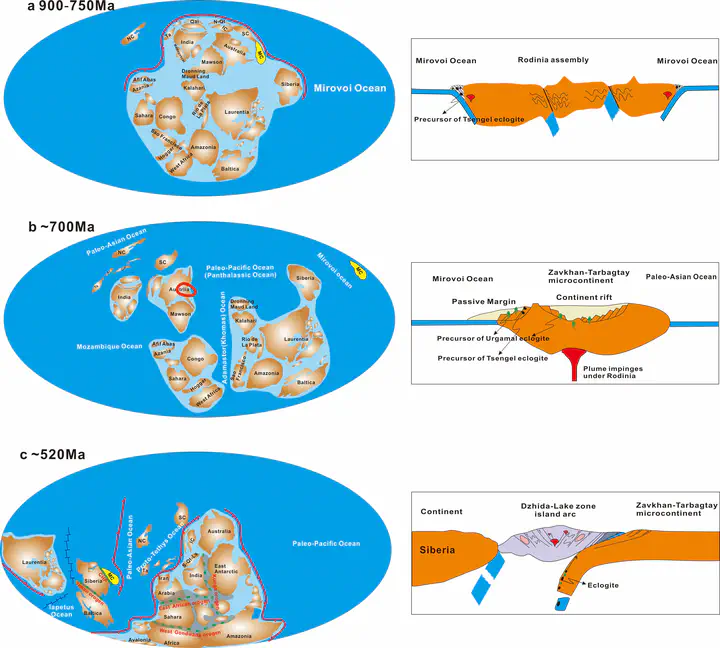Discovery of a >1,000 km Cambrian Eclogite-Bearing High-Pressure Metamorphic Belt in the Central Asian Orogenic Belt: Implications for the Final Closure of the Pan-Rodinian Ocean

Abstract
The immense Central Asian Orogenic Belt (CAOB) records the transition from the Pan-Rodinian Mirovoi Ocean to the Paleo-Asian Ocean, but the final closure of the Mirovoi Ocean remains unexplored. Here we document two new eclogite occurrences, located between CAOB microcontinents and the Ediacaran– Cambrian island arc in Mongolia. Pseudosection modeling and geothermobarometry constrain peak conditions of ∼560°C and ∼2.2 GPa for the Urgamal eclogite and ∼715°C and ∼2.0 GPa for the Tsengel eclogite. Zircon U-Pb dating results suggest the Urgamal eclogite-facies metamorphism occurred at ∼522 Ma, and the granite gneiss enclosing the eclogite yielded ∼811 Ma crystallization age and ∼519 Ma metamorphic age. Detrital zircon age spectra of the paragneisses associated with the eclogite suggest a probable provenance from the adjacent Zavkhan microcontinent and the Neoproterozoic arc superimposed on the microcontinent. The Tsengel eclogite has a protolith age of ∼853 Ma and an eclogite-facies metamorphic age of ∼522 Ma, and the associated migmatite gneiss record a ∼520 Ma migmatization event. The rock associations and geochemical affinities indicate that their protoliths represent mafic rocks formed in a continental rift setting and the Early Neoproterozoic subduction–accretion complex, respectively. Their similar tectonic position and metamorphic age suggest that these rocks are part of a single >1,000 km long Cambrian high-pressure metamorphic belt. The rocks record closure of the Mirovoi Ocean within the CAOB and constrain this crucial event to ∼520 Ma along the western margin of the microcontinents in Mongolia.